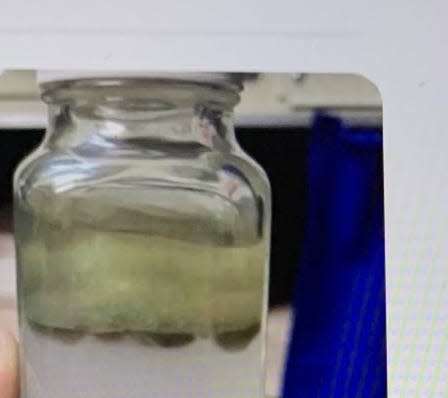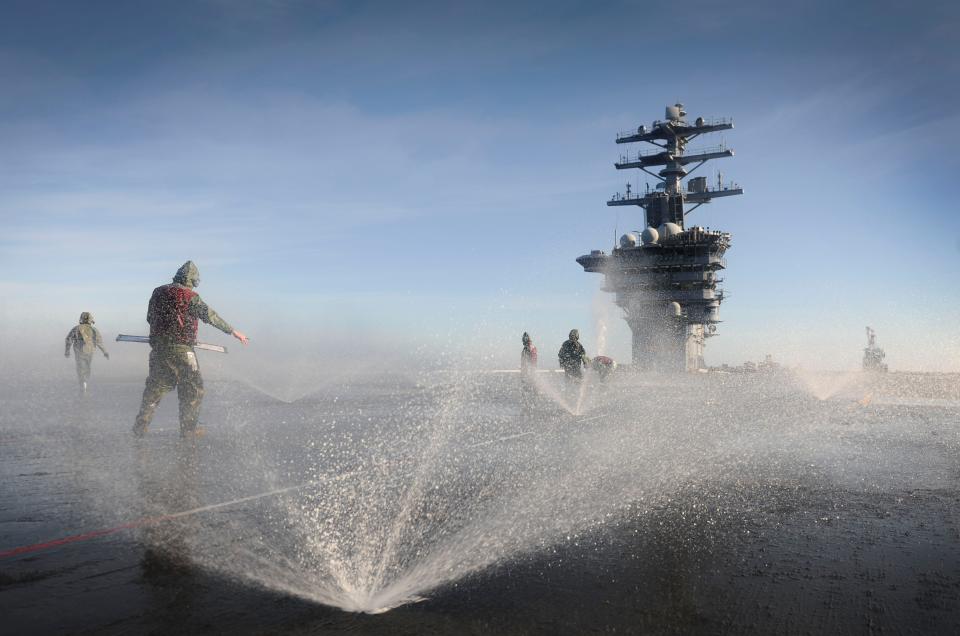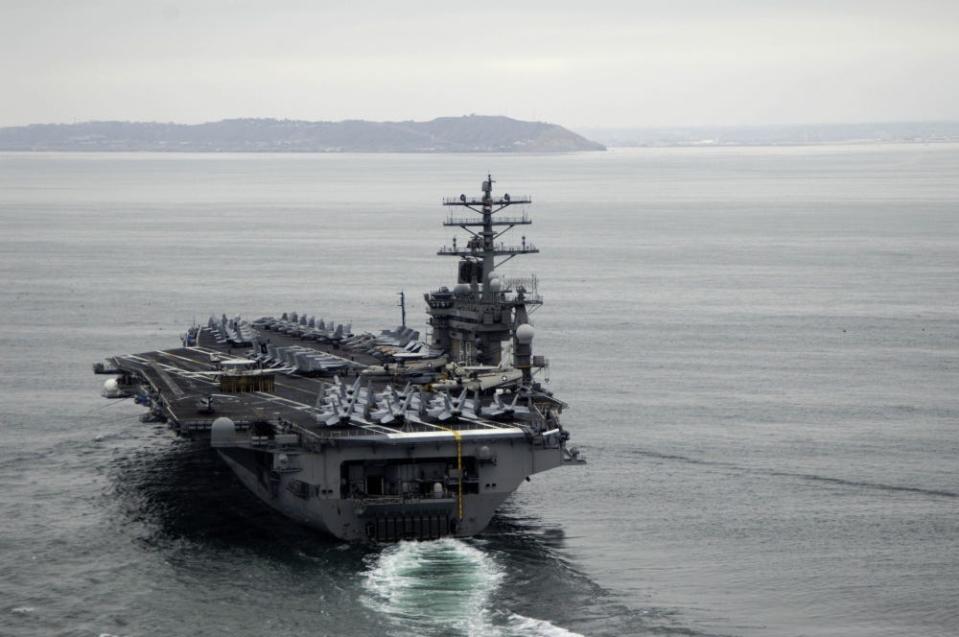No one knew a US aircraft carrier water tank had jet fuel in it until the unaware crew hooked it up to the drinking water system, Navy report says
The Navy acknowledged that it found jet fuel in the drinking water aboard the carrier USS Nimitz.
Sailors previously told Insider that the situation was far worse than what officials initially said.
A new report said that it took more than a year for the crew to realize the tank was polluted.
An unused water tank on a US Navy aircraft carrier was polluted with jet fuel for at least 17 months before anyone realized it, a newly released investigation said. The crew found out when they connected it to the drinking-water system.
As water with an unusual odor came out of the drinking fountains late last summer, the problem started to become clear, but even then, some weren't completely aware of the severity of the problem.
This week, the Navy published the results of an investigation into how jet propellant-5 — a kerosene-based fuel used in military aircraft and known as JP-5 — contaminated the potable water aboard USS Nimitz. The contamination led to nearly a dozen of the Nimitz's sailors reporting concerning symptoms that Navy officials would later acknowledge could have been the result of JP-5 exposure.
Sailors on the Nimitz first noticed that the ship's potable water smelled and tasted like jet fuel on September 16 last year, but the problem started at least a year before that.

In a Monday statement summarizing the investigation's findings, the Navy said that "JP-5 residue in the ship's bilges entered an unused potable water tank through a deteriorated gasket on top of the tank sometime between June 2020 and March 2021, during the ship's previous deployment."
The ship's bilge is the lowest part of the inside of the hull where potentially hazardous substances — like fuel, oil, or sewage — collect during operations. According to the Navy's investigation, jet fuel likely ended up in the bilge space due to the misalignment or malfunction of the ship's main drainage system, which connected to tanks that held JP-5. A failed manway cover gasket then allowed the leak into the offline potable water tank.
The investigation said that eight of the ship's 26 potable water tanks had been taken out of service since at least September 2020, with some of them listed as being out of service due to potential unspecified bilge contamination and seawater contamination. However, the problems were only recorded informally and not adequately communicated to future crews.
"Failure to formally document the deficiency and promptly correct the issue allowed the condition to worsen, and it left the problem to future crew members who had no insight into circumstances of the original problem," the investigation said.

In March 2022, the Nimitz moved to clean several of its potable water tanks that were full of liquid and out of service due to suspected seawater contamination.
The Nimitz requested help from the Puget Sound Naval Shipyard and Intermediate Maintenance Facility, which emptied one tank but was unable to do more because of the limited amount of time and resources available.
So the Nimitz developed a plan that included instructions on emptying tanks using the ship's installed potable water pumps so it wouldn't have to wait for help from the shipyard.
"When developing the sequencing document used to empty potable water tanks, the ship was unaware that any of the tanks contained JP-5," the investigation said. "Informal records indicated tank contained a mixture of potable water and seawater. This was a major factor in the ship's understanding and consideration of the risk associated with pumping liquid from tank through the potable water piping."

Thinking the only problem was seawater, the ship determined that the risk of contaminating the broader potable water system by flushing the tanks out was low. "The ship did not know or consider the possibility that the tank might contain contaminants other than seawater," the investigation added.
When sequencing commenced on September 16, 2022, the same day reports of water that smelled of jet fuel surfaced, proper procedure wasn't followed, leaving key players in the process unfamiliar "with the procedure or system lineup" and "largely unaware that the procedure was being executed," the report said.
So when "unexpected conditions" — water that smelled like jet fuel — showed up, the report said that they "did not recognize the significance" and "were unable to determine or take appropriate corrective actions to prevent more significant consequences from occurring." The JP-5 then spread to the distribution system, creating a more serious issue.
While the investigation includes over a dozen recommendations for preventing this contamination from happening again, it does not mention any disciplinary action.

Not long after the problem was first discovered on the Nimitz, the Navy said it found only traces of jet fuel in the water. However, a sailor told Insider that the problem was worse than the service initially let on and that they were exposed to an "unhealthy amount" of JP-5.
And the Nimitz was not the only aircraft carrier to deal with contaminated water last year. The Navy also found that the drinking water aboard the USS Abraham Lincoln was polluted with bilge water and bacteria. One sailor told Insider the water tasted "horrible" and that they couldn't "escape it."
In addition to the Navy's findings on the contamination aboard the Nimitz, the service also investigated the presence of bacteria in the USS Abraham Lincoln's potable water and said that "bilge water entered a potable water tank through a hole, caused by corrosion, in the tank's ventilation pipe."
Polluted water on Navy ships is not isolated to these two vessels. Veterans of the Marine Corps and the Navy told Insider that sailors aboard aircraft carriers, and amphibious assault ships had, for decades, experienced water that was contaminated by jet fuel.
Read the original article on Business Insider

